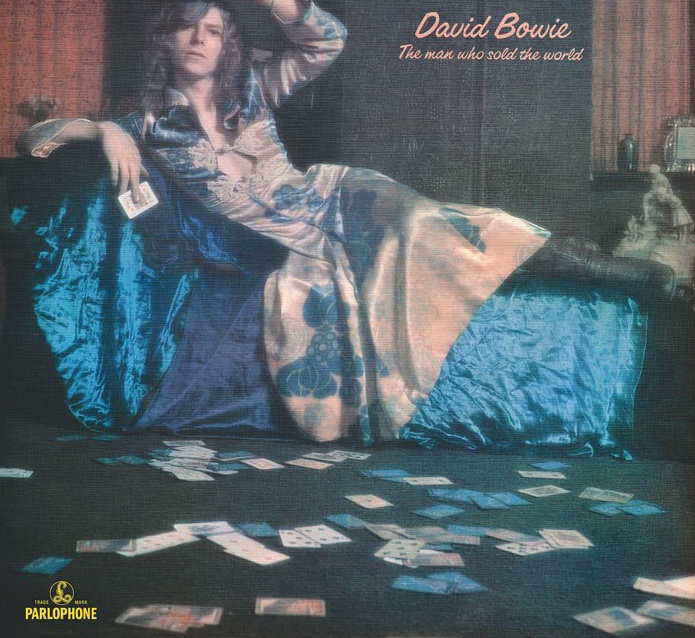Look up here, I’m in heaven
I’ve got scars that can’t be seen
I’ve got drama, can’t be stolen
Everybody knows me now.
Lazarus, by David Bowie
Death crops up a lot in the songs of David Bowie. A potent conjuror of darkness and despair, his apocalyptic vision caught the spirit of the age. Bowie took two things from the influential cult novelist William S Burroughs; his stage name, and the cut-up writing technique that Burroughs had developed in the 1960’s.
Bowie was the ultimate shapeshifter. An artist who embraced ambiguity throughout his career, he constantly reinvented himself, killing off one incarnation after another until his death from liver cancer in 2016, and the way he left his life was just as unconventional as the way he had lived it.
Already aware of his impending death, Bowie recorded his last album in New York in 2015 with his friend and longtime producer, Tony Visconti, and although the musicians they worked with had no idea Bowie was unwell, the clues are there in the lyrics.
The title itself, Black Star, is a reference to what cancer specialists call a “black star lesion,” and of course Lazarus was the man famously raised from the dead by Jesus Christ.
The artwork for the album is similarly full of oblique clues. Designed by Jonathan Barnbrook, who had previously worked with Bowie on three other releases, what looks like a simple, two-dimensional five-pointed star contains a whole cosmos – but it took four months before anyone realised, as this story reveals.
Dwaine Butters was listening to the album and examining the sleeve when he noticed a tiny golden spot. At first he thought it was a printing error, but when he held the artwork up to the light, he saw that the black star was actually full of tiny holes that turned it into a mini starscape.
There were no weeping crowds at Bowie’s funeral, and no media coverage: instead, he had a private, unpublicised and unattended cremation at a secret location. It’s far from his greatest legacy, but in the year after his death, the number of unattended cremations rose by 400% and the phrase, ‘to do a David Bowie’, has now entered the language.
Ashes to ashes, funk to funky
We know Major Tom’s a junkie
Strung out in heaven’s high
Hitting an all-time low.
The phrase ‘ashes to ashes’ comes from the burial service in the Anglican Book of Common Prayer which was written in the 17th Century, but Bowie wasn’t the first to recognise the repetitive power of those words.
The anonymous authors of the King James Bible had themselves recycled and reworded verse nineteen from chapter three of the Book of Genesis:
‘In the sweat of thy face shalt thou eat bread, till thou return unto the ground; for out of it wast thou taken: for dust thou art, and unto dust shalt thou return.’
In David Bowie’s case, an unmarked van will have arrived at the back door of the crematorium, from which a plain coffin will have been taken directly to the cremator and placed inside. About an hour later (Bowie was always very slim), his body will have been reduced to a pile of ash, and his ‘cremains’, as they are inelegantly known, raked out into a tray before being taken to the Indonesian island of Bali to be scattered to the four winds.
Ashes to ashes, indeed.

I have my own Six Degrees of Kevin Bacon connection to Bowie and to Barnbrook. My friend Jim Jamieson had an original copy of the 1971 album “Man Who Sold the World” which featured Bowie wearing a dress – a very subversive image at the time.
The album was not a success – Bowie himself said it sold only a few hundred copies – and when it was re-released, his label gave it a new cover that reflected his Ziggy Stardust identity. Inspired by Bowie as thousands of other teenagers were, Jim and I formed a band called Angel and we spent a couple of years touring the dance halls of the East Coast of Scotland, knocking out covers of Ziggy Stardust and Suffragette City before reluctantly concluding that Rock’n’Roll stardom was not for the likes of us.
Many years later, in 1994, I worked with Jon Barnbrook on a series of TV commercials for BBC Radio Scotland and we became friends, so when I wrote my book “WE DO!”, he very kindly agreed to design it although the book was far from his usual subject matter or style.
One of the reasons I’m such a fan is Jon’s inspiring attitude to life, which was epitomised by the way he responded to Bowie’s death. He released the artwork elements of ★ (Blackstar) under a Creative Commons non-commercial share alike licence which means they can be freely downloaded.
As he said, “That means you can make t-shirts for yourself, use them for tattoos, put them up in your house to remember David by and adapt them too, but we would ask that you do not in any way create or sell commercial products with them or based on them. Any questions or commercial licence usage please contact us.” us@barnbrook.net

0 Comments Leave a comment